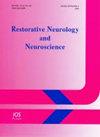Endovascular parent artery coil occlusion for ruptured vertebral artery dissecting aneurysms
IF 1.6
4区 医学
Q4 NEUROSCIENCES
引用次数: 0
Abstract
Background: The outcome of ruptured vertebral artery dissecting aneurysms (VADA) managed with endovascular coil occlusion technique is reviewed. Method: This is a retrospective study of prospectively collected data of 25 cases with ruptured VADA managed by a standardized endovascular parent artery occlusion technique. All cases were treated with coil occlusion of the dilated segment with a short proximal segment of the involved non-dominant or co-dominant vertebral artery within 12 hours of admission. All cases were done under general anesthesia with no anticoagulation. Outcome was assessed clinically with modified Rankin score as well as follow up MRI at 6 months. Results: There were a total of 25 cases, 10 female and 15 males. Age range 18 to 70, mean age 41. Twenty cases (80%) were WFNS grade 1 to 3. Five cases were grade 4 to 5. Treatment complication of cerebellar embolic infarct occurred in one case (4%). There was no hemorrhagic complication post treatment. 16 cases required ventriculoperitoneal shunting. Outcome was good with modified Rankin score of 0 to 2 in 20 cases (80%). There were 5 poor outcomes including one death (4%) due to the primary effect of subarachnoid hemorrhage in a case presenting with WFNS grade 5. All cases with WFNS grade 1 to 3 at presentation obtained good outcome. In all 24 cases who survived, follow up MRI showed that all aneurysms remained occluded at 6 months. Conclusion: Endovascular parent artery coil occlusion is effective and durable for ruptured VADA.椎动脉夹层动脉瘤破裂的血管内母动脉线圈闭塞治疗
背景:对血管内线圈闭塞技术治疗椎动脉夹层动脉瘤(VADA)的疗效进行综述。方法:回顾性分析采用标准化血管内母动脉闭塞技术治疗的25例VADA破裂患者的前瞻性资料。所有病例均在入院后12小时内对扩张段与受累非优势或共优势椎动脉近端短段进行线圈闭塞治疗。所有病例均在全麻下无抗凝治疗。采用改良Rankin评分和6个月MRI随访评估临床预后。结果:共25例,其中女10例,男15例。年龄介乎18至70岁,平均年龄41岁。WFNS 1 ~ 3级20例(80%)。4 ~ 5级5例。治疗并发症小脑栓塞性梗死1例(4%)。治疗后无出血并发症。16例需行脑室腹腔分流术。结果良好,20例(80%)改良Rankin评分为0 ~ 2分。在一例WFNS 5级患者中,有5个不良结局,包括1例死亡(4%),主要原因是蛛网膜下腔出血。所有WFNS评分为1至3级的病例均获得良好的预后。在所有存活的24例病例中,随访MRI显示所有动脉瘤在6个月时仍然闭塞。结论:血管内母动脉线圈闭塞术是治疗VADA破裂的有效且持久的方法。
本文章由计算机程序翻译,如有差异,请以英文原文为准。
求助全文
约1分钟内获得全文
求助全文
来源期刊
CiteScore
5.40
自引率
3.60%
发文量
22
审稿时长
>12 weeks
期刊介绍:
This interdisciplinary journal publishes papers relating to the plasticity and response of the nervous system to accidental or experimental injuries and their interventions, transplantation, neurodegenerative disorders and experimental strategies to improve regeneration or functional recovery and rehabilitation. Experimental and clinical research papers adopting fresh conceptual approaches are encouraged. The overriding criteria for publication are novelty, significant experimental or clinical relevance and interest to a multidisciplinary audience. Experiments on un-anesthetized animals should conform with the standards for the use of laboratory animals as established by the Institute of Laboratory Animal Resources, US National Academy of Sciences. Experiments in which paralytic agents are used must be justified. Patient identity should be concealed. All manuscripts are sent out for blind peer review to editorial board members or outside reviewers. Restorative Neurology and Neuroscience is a member of Neuroscience Peer Review Consortium.

 求助内容:
求助内容: 应助结果提醒方式:
应助结果提醒方式:


